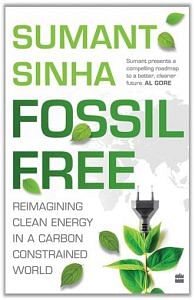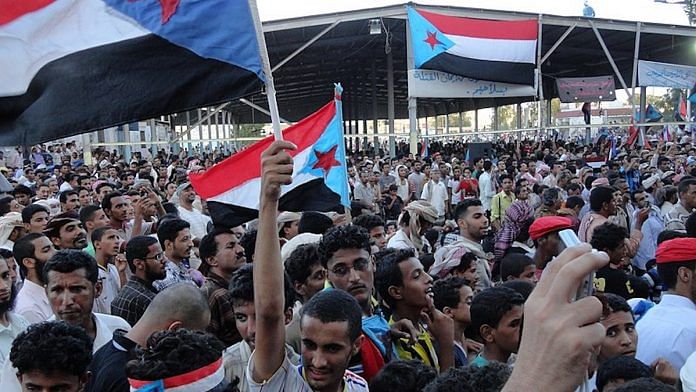Dirty coal and oil are the main contributors towards global warming and climate change. They are also the main sources of energy for the rich, industrialized countries. The need for their cheap and reliable availability and transportation is perhaps the largest cause for war and conflict across the world.
The outcomes: riots, uprisings and tyranny.
Discontent in Arabia
The Arab Spring (2010–11) was, as one news headline put it, ‘A revolution of the hungry’. I would say that it was not just ‘a revolution of the hungry’ but also a revolution of the thirsty, a good example of the energy-food-water nexus.
Our history books tell us that the Fertile Crescent, the area that stretches from the Egyptian Nile to the mouth of the Tigris and Euphrates, is where agriculture began—where wheat, lentils, chickpeas, olives and even sheep and goats were first cultivated. Today, the states in and around that region are the world’s largest net importers of food and depend on North America, Europe and Central Asia for the same. Food is expensive, people are poor, and repressive regimes rely on imported wheat financed through foreign aid.
Why is this so? The MENA—Middle East and North Africa— region is the world’s most water scarce region, with average annual per capita renewable water resources amounting to only 340 m3, and annual rainfall averaging a mere 235 mm. The world average for these figures is 1,000 m3 and 800 mm, respectively. The MENA is also a region with a fast-growing population. It is a given that bread riots will bubble up with any disruption in the global food supply, when there’s a drought, or when global oil prices fall making grain imports more expensive.
Also read: India will not be a hurdle to global climate goals even without net-zero emissions
On 17 December 2010, Mohammed Bouazizi, a twenty-six-year-old street vendor in the small Tunisian city of Sidi Bouzid set himself on fire in front of the governor’s office. Al Jazeera reported that earlier in the day, the police had confiscated his cart and beaten him because he did not have a permit. He went to the governor’s office to file a complaint, but was ignored by the workers. Bouazizi then acquired a gasoline can from a nearby gas station and returned to the governor’s office. Less than an hour after his confrontation, Bouazizi doused himself in gasoline and set himself alight. He suffered 90 per cent burns and, despite the government’s worried interest in the case after it went viral in the global media, succumbed to his injuries on 4 January 2011.
Within hours of his death, protests began in Sidi Bouzid. Anger and violence swept the country fast and with such intensity that President Ben Ali and his family fled Tunisia on 14 January 2011. The protests quickly spread to several other Arab countries, notably Egypt, Libya, Syria, Yemen, Bahrain, Saudi Arabia, and Jordan. Abdou Abdel-Moneim Jaafar, a fifty-year-old restaurant owner, set himself alight in front of Egypt’s parliament in Cairo, sparking off weeks of protest. Eventually, this triggered the resignation of Egyptian President Hosni Mubarak on 11 February 2011.
Most conflicts showing up in the mainstream news media highlight popular angst taking on oppressive rulers, populations at the receiving end of nature’s vengeance, or countries trying to manage scarce reserves of energy, water or food. The fights can also be local, more so in densely-populated, poor countries such as India, where every unit of land, water, air, and forest is considered a prize that is either to be possessed or protected.
Also read: Businessman writes ‘practical playbook’ for affordable shift to ‘Fossil Free’ world
The more recent case of Venezuela
Venezuela is said to hold the world’s largest supply of crude oil and natural gas—what once seemed like a perennial cash cow for the petro-state. However, today the country is running out of food, its currency (the bolivar) has plunged, inflation has soared, and its hospitals are overcrowded. Contributing in no small measure is the political crisis that has taken the nation into endless riots and killings. So what caused Venezuela’s rapid descent into chaos? Opinions are divided on possible reasons, including misgovernance, subsidy-based state welfarism and even US-sponsored stoppage of technology transfer. But the consensus points towards the plunging price of oil, Venezuela’s main revenue earner.
In 2014, the price of oil peaked at $100 a barrel. This provided an economic incentive to producers, including large nation states, to use more sophisticated and expensive technologies to drill deeper in search of oil. At the same time, businesses and countries globally weren’t buying more oil—at least, not from the traditional providers. New oil and gas from tar sands and shale from within the US and Canada suddenly and swiftly caused the global price to drop to $26 in 2016, and the US went from being the world’s largest importer of oil to becoming the largest producer.
When prices had peaked at $100 a barrel in 2014, oil and oil products accounted for 95 per cent of the export earnings and 25 per cent of the GDP of Venezuela. Today, as oil hovers around $40, Venezuela’s income has been cut by a half to three-quarters. The government’s earnings have dwindled, yet the state continues to subsidize food and other services for the poor. A plunging currency and runaway inflation have resulted in massive unemployment and income that buys little, not even food.
The oil collapse savaged Venezuela’s economy and brought political tensions to a head in the form of a constitutional crisis, mass protests and, in recent times, looting and fatalities. On the night of 21 April 2017, the neighbourhoods of the working-class and the poor of Venezuela’s capital Caracas, were engulfed in riots. Two days of demonstrations against Nicolás Maduro’s government boiled over into clashes between his opponents and his government’s National Guard. The demonstrators went on a rampage, burning tyres on the streets and looting stores.
But this was only the latest in a never-ending series of protests, riots, lootings and deaths that have bedevilled scarcity-struck Venezuela since 2013, the year that Hugo Chávez (president since 1999), died. A horrible slide for an oil-rich country that barely a decade ago was seen as a model for countries struggling to lift themselves from endemic poverty, inequality, hunger and illiteracy.
Also read: Hunger could kill more people than the Covid pandemic in 2020
The vicious circle of the land-climate-water-food-energy-pollution nexus is upon us. In other words, the declining sources of energy and water supplies, coupled with pollution and climate change, are leading to food shortages that lead to political problems, that lead to energy inflation, that lead to food inflation, and eventually social upheaval and misery.
The oil-producing regions are surely facing extreme volatility, but it’s time for the rest of the world—so dependent on imported and dirty fossil fuels—to accept the connections between energy, food, water, climate change, political/social unrest and wars (external and internal).
If the water in the Middle East dries up faster than expected, global oil supplies may decrease even faster than we anticipate as agitations take root in the affected regions. If climate change and pollution from fossil-fuelled automobiles and dirty coal-fired power plants are not kept in check, we will be condemning future generations to extreme hardship, ill health and misery. The time to build a more resilient water-conserving, post-oil, post-coal, post-nuclear, economy is now.
 This excerpt from Fossil Free: Reimagining Clean Energy In A Carbon Constrained World by Sumant Sinha has been published with permission from HarperCollins India.
This excerpt from Fossil Free: Reimagining Clean Energy In A Carbon Constrained World by Sumant Sinha has been published with permission from HarperCollins India.




We do t live in a static system and historically comparing to previous 190,000 years humans have enjoyed a very stable and easy climate to live in this last 9000 years. Ice core And sea floor cores are proof this. You have ZERO clue.